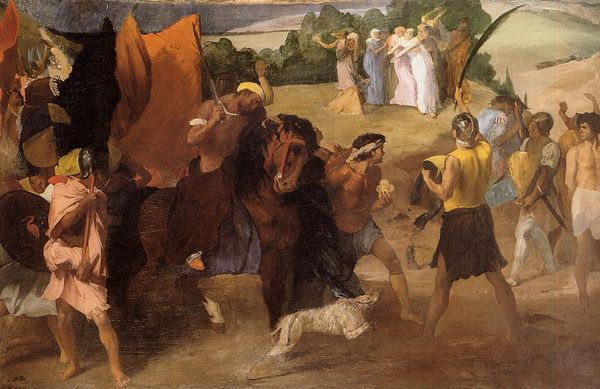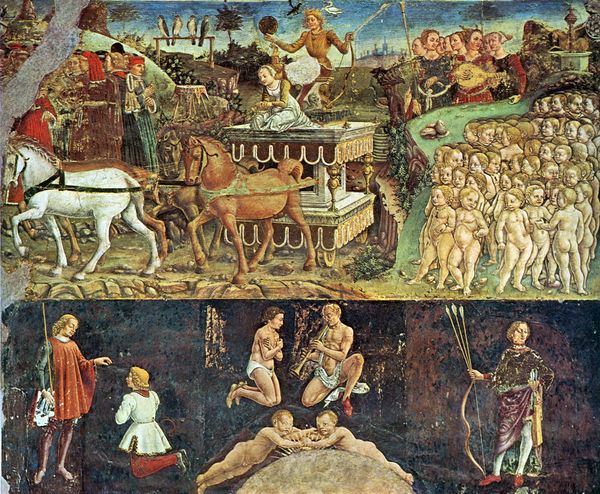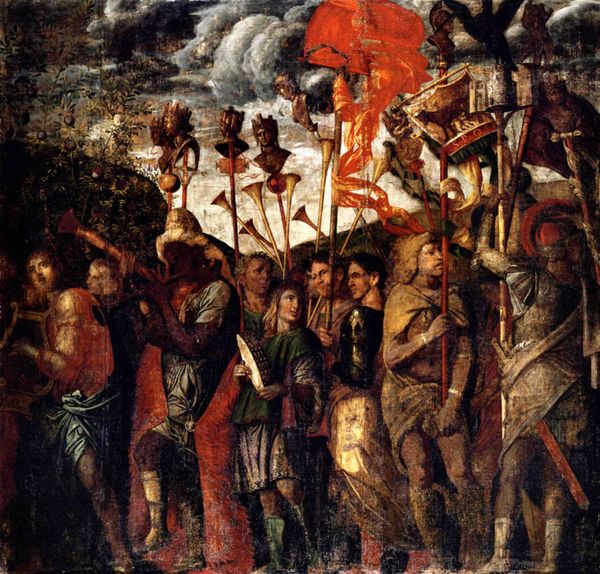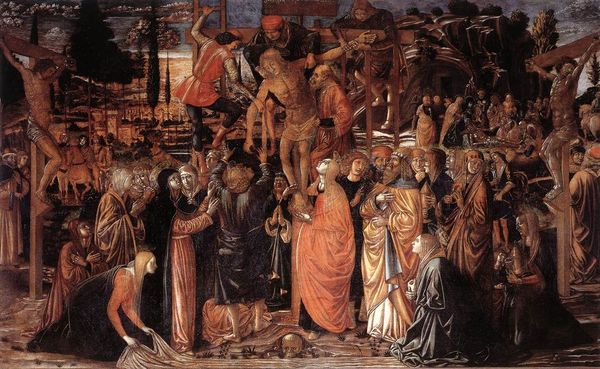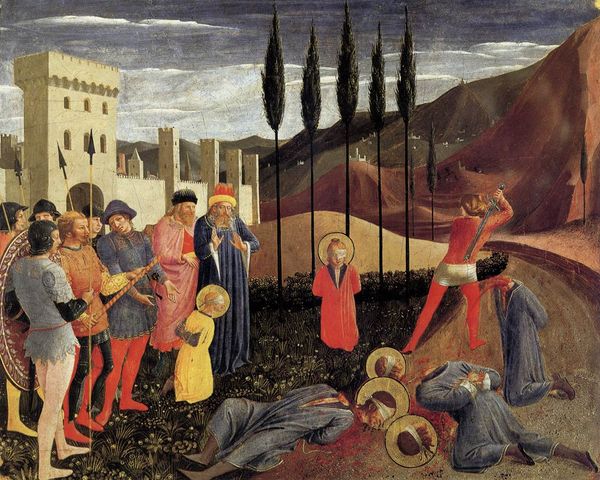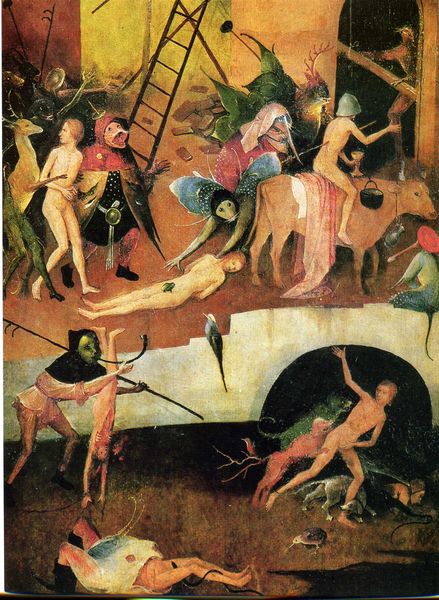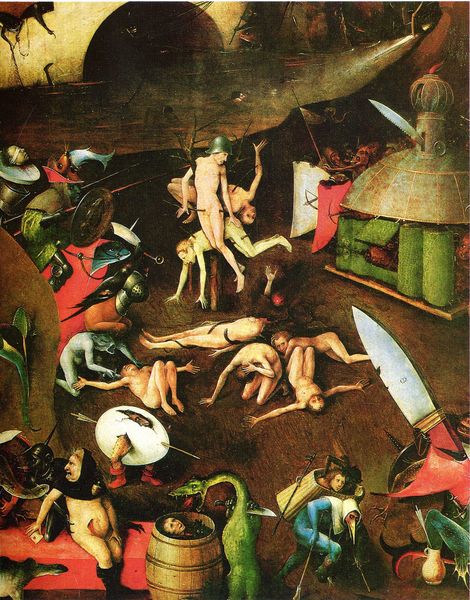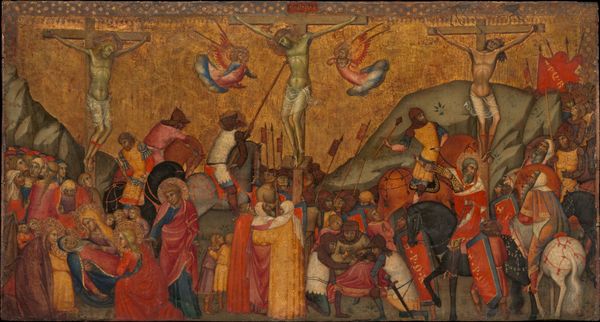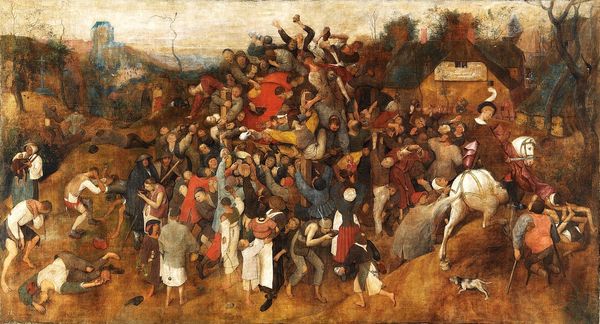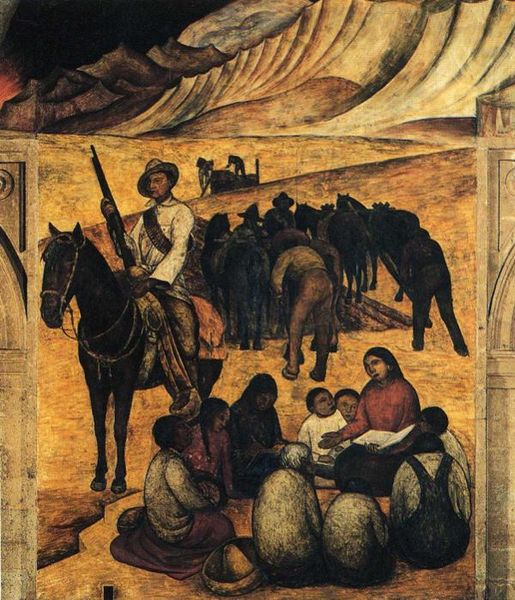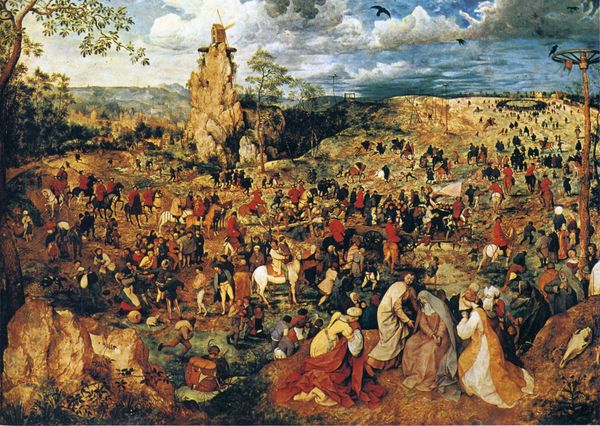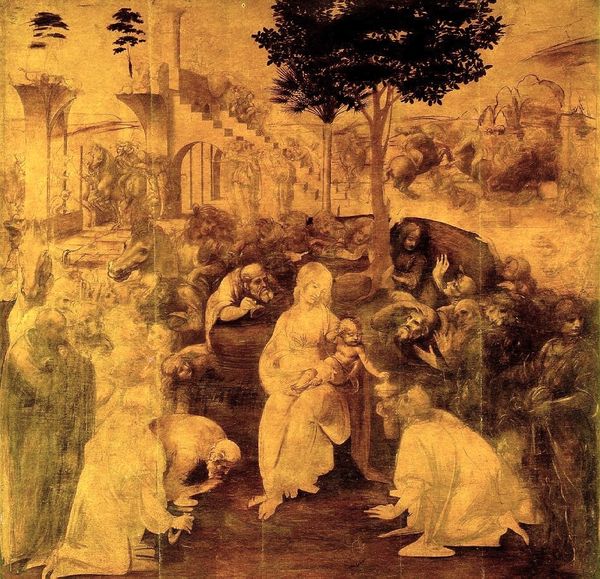
tempera, painting
#
medieval
#
narrative-art
#
tempera
#
painting
#
figuration
#
painting art
#
history-painting
#
academic-art
#
italian-renaissance
#
mixed media
Dimensions: 24 x 38 cm
Copyright: Public domain
Editor: So here we have "Burning of a Heretic," a tempera on wood panel painted around 1426 by Il Sassetta. The scene feels very staged and deliberate, even though the subject matter is quite violent. What strikes you when you look at this piece? Curator: It is precisely that tension between the decorative style and brutal subject that is so compelling. Sassetta paints the scene with an almost detached formality, highlighting the institutional nature of the act. Consider the role of the Church at this time; religious orthodoxy was inextricably linked with political power. How does Sassetta's rendering contribute to or critique that relationship, would you say? Editor: I guess the lack of visible emotion makes it feel less like a mob and more like a formal execution. It almost normalizes it. Do you think the composition is meant to be critical of the Church? Curator: It's tricky to say definitively what Sassetta "meant." But think about how the work would function for its intended audience. Did it serve as a warning, a celebration of righteousness, or perhaps, something more complex? What do you think the presence of all the spectators means to the overall narrative of the image? Editor: Perhaps the sheer number of observers suggests it’s a public demonstration, aimed at maintaining social control. A message about the consequences of heresy, clearly, but made explicitly visible. Curator: Exactly! The performative aspect is key. This wasn't just about eliminating dissent; it was about publicly reinforcing the Church's authority. Looking at this today, what it does it make you think about with relation to the power of art in politics and public imagery. Editor: It makes me think a lot about how propaganda can work. I learned quite a bit, particularly about the performative and institutional implications of such a fraught topic represented in such a detached manner. Thanks for your insights!
Comments
No comments
Be the first to comment and join the conversation on the ultimate creative platform.
